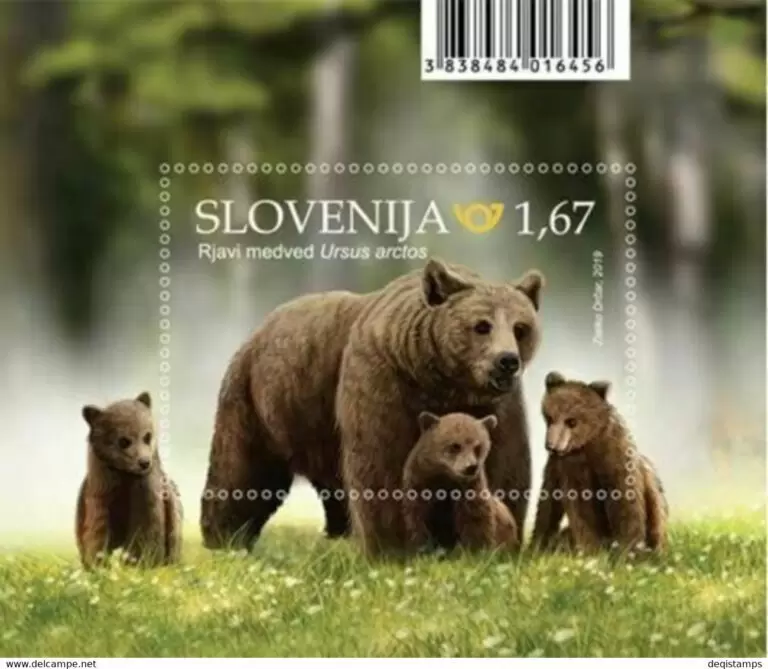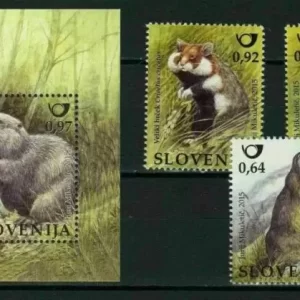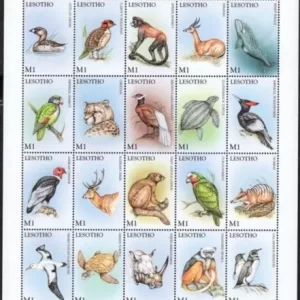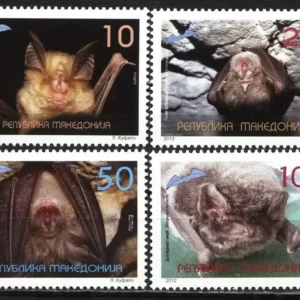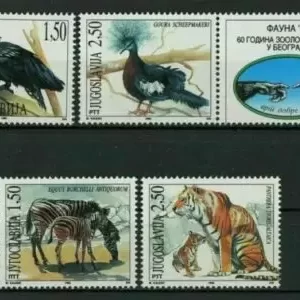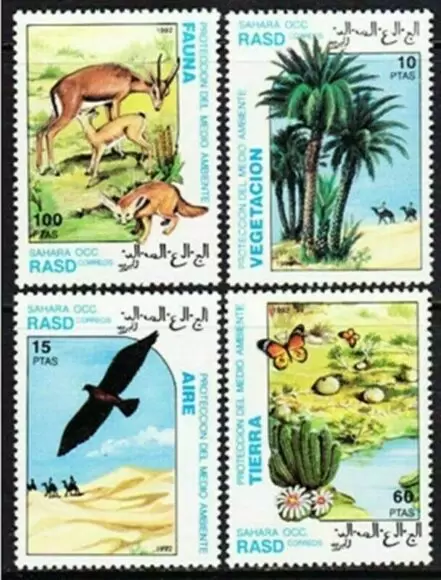Slovenia 2019 ☀ Animals Brown Bear MSS ☀ MNH New Unused
Slovenia is home to a thriving population of Brown Bears whose numbers reach more than 1000 individuals. They roam the forests of southern, western and central Slovenia, with the highest densities found in the extensive Dinaric forests. More than 60% of its surface is covered by forest, which makes is the third most forested country in the European Union after Sweden and Finland. This provides a great habitat for brown bears – one of the largest population of its kind in Europe. Even though brown bear is classified as a carnivore species, they are actually omnivorous and mostly vegetarian in reality. They eat a wide variety of foods (e.g. fruits, berries, seeds, nuts, roots, grass, insects, carrion, sometimes wild ungulates).
Brown bears are known for their omnivorous diet, meaning they consume a wide variety of foods. Their diet includes:
- Berries: Brown bears feed on various types of berries found in their habitats, such as blueberries, raspberries, and blackberries. These fruits provide important nutrients and are often consumed during the summer months.
- Plant roots and shoots: Brown bears will also consume plant roots and shoots, particularly in the spring when these items are more readily available. They may dig up roots or forage for young shoots to eat.
- Small mammals: Brown bears are opportunistic feeders and will prey on small mammals such as rodents when the opportunity arises. They may hunt rodents in areas where they are abundant or dig vigorously to uncover them.
- Fish: Brown bears are skilled fishermen and will catch fish, particularly salmon, during the spawning season. They are known to frequent rivers and streams during this time to take advantage of this food source.
- Calves of many hoofed animals: Brown bears are capable of preying on young or weakened hoofed animals such as deer, moose, or caribou calves. They may target these animals when other food sources are scarce.
- Carrion: Brown bears are scavengers and will consume carrion, or dead animals, when they come across them. They may scavenge carcasses left behind by other predators or feed on animals that have died from natural causes.
Brown bears are known to cache food by burying it in shallow holes, particularly when they have excess food that they cannot consume immediately. This behavior helps them store food for later consumption.
During the winter months, brown bears in most areas, except for some southern regions, enter dens for hibernation. They accumulate large amounts of fat during late summer and autumn to sustain them through the winter months when food may be scarce.
Female brown bears typically give birth to cubs during the winter denning period, after a gestation period of about six to eight months. Cubs are usually born in litters of two, although litter sizes can vary. The mother cares for and protects the cubs until they are old enough to fend for themselves.

